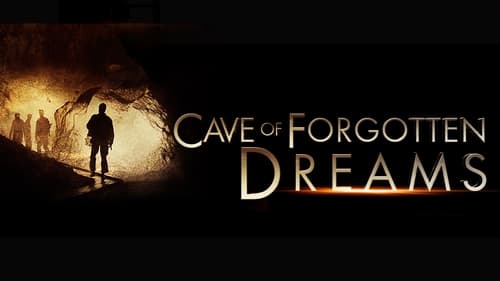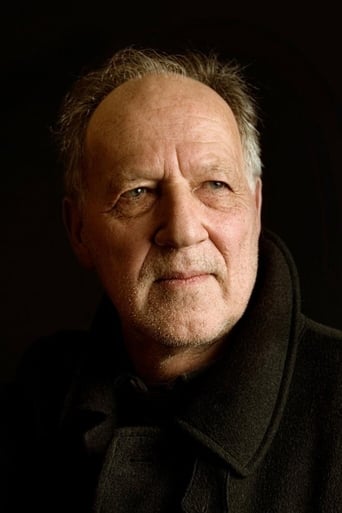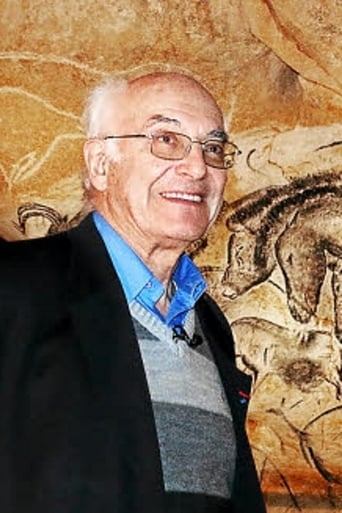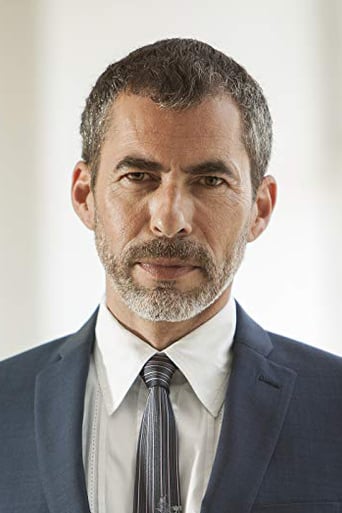Jackson Booth-Millard
There are some good examples of documentaries that have featured in the book 1001 Movies You Must See Before You Die, I hoped this one directed by Werner Herzog (Nosferatu the Vampyre, Fitzcarraldo, Grizzly Man) would be another good one. Basically in 1994 in Southern France a cave perfectly preserved for over 20,000 years was discovered by scientists, it contains the earliest known human paintings and images yet discovered, this was named the Chauvet Cave, after scientist Jean- Marie Chauvet. With the cultural significance the French government immediately cut-off all access to it, only allowing a few scientists, archaeologists and paleontologists to document it. Director Werner Herzog has been granted a limited amount of time and access to the cave, he is one of only a few allowed to film inside, he examines the beautiful artwork created by our ancestors over 32,000 years ago, some of which despite being centuries old looks fresh. Herzog asks questions to various historians and scientists during his journey about what the humans who visited, but never lives, in the caves would have been like and trying to build a bridge from the past to the present. The title comes from the fact that these hand drawn images were forgotten obviously, and some of the imagery is like something out of dreams, the narration by Herzog throughout has strange philosophy and meaning, but you can ignore this somewhat, the most interesting thing about this film is of course the ancient discovery and the fascinating things to see inside the cave, so it's a worthwhile enough documentary film. Good!
tieman64
A large chunk of Werner Herzog's many documentaries focuses on dwarfs, disabled or severely handicapped human beings ("Land of Silence and Darkness", "Handicapped Future" etc). These films tend to be absurdist allegories about a mankind which either triumphs or perishes in the face of what Schopenhauer called Nature's "appalling horror". Then you have Herzog's explicitly religious docs ("God's Angry Man", "Wheel of Time", "Huie's Sermon", "How Much Wood Would a Woodchuck Chuck", "Bells From The Deep" etc). These typically focus on different forms of belief (tribal mysticism, mainstream religions, capitalism-as-belief-system etc), ordering systems which, when faith in them collapses, results in the mental breakdowns of Herzog's "mad" protagonists. But for Herzog, belief is itself psychosis and those deemed madmen are but hyper-rational, often with some fantastic insight into reality.Another subset of Herzog's documentaries ("Echoes from a Somber Empire", "Happy People", "Herdsmen of the Sun", "Jag Mandir") tends to delve into different, often primitive cultures. These give way to documentaries like "World Into Music" and "Death for Five Voices", which focus on music, usually Wagner or opera. Then you have Herzog's "flying documentaries" ("The Flying Doctors of East Asia", "Wings of Hope", "Little Dieter Needs To Fly", "The Great Ecstasy of Woodcarver Steiner" and "The White Diamond"), which again hinge on frail human beings who attempt to lift themselves above a cruel and malevolent Nature. The jungles usually win, of course, leading to calamities, crashes and stark shots of vines strangling steel wreckage.Another subset of Herzog's documentaries focus on either war ("Ballad of a Little Soldier", "Lessons of Darkness") or anticipates outright the apocalyptic end of the world ("Lessons of Darkness", "Wild Blue Yonder", "Encounters at the end of the world"). For Herzog, humanity seems destined to perish and his camera often takes on the perspective of a future, almost alien archaeologist, foraging amongst the wreckage of some long extinct race.Then you have Herzog's explorer documentaries ("Wild Blue Yonder", "White Diamond", "Dark Glow of the Mountains", "Grizzly Man", "Encounters at the End of the World"), which tend to watch as scientists, adventurers or inventors embark on allegorical journeys. Here, nature is often shot so as to resemble either hellish cauldrons or religious cathedrals. Some of Herzog's explorers meet death, some succeed. Typically these men are presented as outcasts who live on the fringes of society, some stable, some unstable, some geniuses, some deeply disturbed.Whilst all of Herzog's documentaries have complex overlaps and can't be as neatly grouped as written above, all chart a broad movement away from German Romanticism, and so the sublime, to absurd, serio-comic tragedies. Or, perhaps more correctly, the majesty, awe and horror of Romanticism is itself that which puts Herzog's characters in an absurd light. Human's are tragic because they are, in Herzog terms, essentially dwarfs. Indeed, the theoretical foundation for the early German Romantics, the Schelegel Brothers' publication of Athenaeum (1798-1800), specifically listed "alienation" and "absurd irony" as the bedrocks of the new intellectual/artistic movement; German Romanticism wasn't just all about grand landscapes and tall trees.Werner Herzog's "Cave of Forgotten Dreams" centres on the Chauvet caves in Southern France, the location of a series of Paleolithic cave paintings which were once thought to be the oldest surviving paintings in the world. The film watches as various scientists (typical of Herzog, they're presented as outcasts, some even former circus workers) investigate the caves, but Herzog is more interested in the ways in which the palaeolithic world is both similar to ours, and forever unknowable. The scientists map and search, but are always alienated from the past, and so desperate to connect with and project upon it. These desires then echo those of our own, ancient cave dwelling ancestors.Much of the film's middle section watches as Herzog draws parallels between cave paintings, 3d films, cinema and the robot camera he uses for several of "Cave's" elaborate shots. Elsewhere Herzog points out that there are 5000 year gaps between some of the paintings. "This duration of time is unimaginable for us today," he says, and later implies that "we are locked in history" whilst "they were not". Our history, our time, is compressed, seemingly moving faster and faster, whilst paleolithic man seems stuck in an infinite moment. The film then launches into a subplot which describes history, not as teleology, but as a complex process with its own causalities. Herzog caps this off with the tale of an albino alligator which stares at its own reflection and which is morphed by climate changes which are themselves wrought by human activity. Humans change, adapt, mutate themselves, but are always looking backwards, back in time perhaps, at their own misconstrued reflections. The film then ends with a prehistoric palm print.Overlong and repeating things Herzog has done before, and better, "Dreams" is a mixed bag. With his doppelganger alligators – like us, the alligator is both contemporary and prehistoric – Herzog aims for the sublime, but can't quite manage. Elsewhere he attempts to imbue his caves with cathedral-like, spiritual qualities, but these moments don't quite come off. For Herzog, the cave is a temple which houses "the beginnings of the modern human soul", a temple which he hopes to fill with subdued passions and profound mystery.What works better is Herzog's dry humour. One scene, for example, features Herzog likening modern man's love for "Baywatch" with ancient sculptures, with their exaggerated hips and breasts. Maybe ancient humans were just like us; a bunch of perverts.7.9/10 - Worth one viewing.
ifyougnufilms
Perhaps this was intended as a Monty Python flavored mocumentary of some particularly pompous and solemn History Channel product. If it is, Werner has succeeded brilliantly. It's hilariously Dickensian in its portrayals of slightly loony characters and in throwing around jumbled theses in response to the Really Big Questions: Who are we? What is art? What is that awful music in the background? Will mutated white alligators some day make mocumentaries about us? Herzog and his cast of zanies play around with these gas-filled profundities, while we wait impatiently for some clear, well-lighted shots of those quietly beautiful sketches by our ancestors or some more earnestly scientific speculation on means, motives,and methods of the ancient artists. Instead we keep getting Gallic stereotypes like the sniffy matron d'cave guide who scolds the crew, reminding them not to step off the gangplank because their stupid boots will tramp out the 10,000 year-old footprints of a cave bear and then pauses to insist (rather too eagerly)that an indecipherable lump of rock shows a minotaur or something molesting the lower part of a woman's...well, you get the picture: the world's oldest cave porn. Then there is the paleo-reenactor who demonstrates the art of operating an atl-atl spear-sling, apparently attempting to fatally impale a grape arbor. Or do you prefer the archivist who shows us his collection of pendulous paleo-Venus carvings. One in particular he seems exceptionally fond of, not enough to marry perhaps, but at some point one expects he's about to say, "Could you all just please leave my lab now? We want to be alone." Eat you heart out Mel Brooks. Don't even get me started on the nice old guy who informs us he was once the Master of All French Perfumers or some such and who now wanders the wilds so he can sniff his way into promising holes in the ground, where he asks others to join him in smelling the essences of our deodorant-innocent ancestors. At one point he seems to get quite confused, staring into the camera as if to ask, "Am I ready for my close up now, Mr. Herzog?" All this is great for evoking chortles, of course, but there is such beauty in these caves (look at the haunting portrayal of the four expressive, individualized horses, for instance)that one wishes a more down-to-earth (pun intended),less artsy director had made a documentary on the subject.





